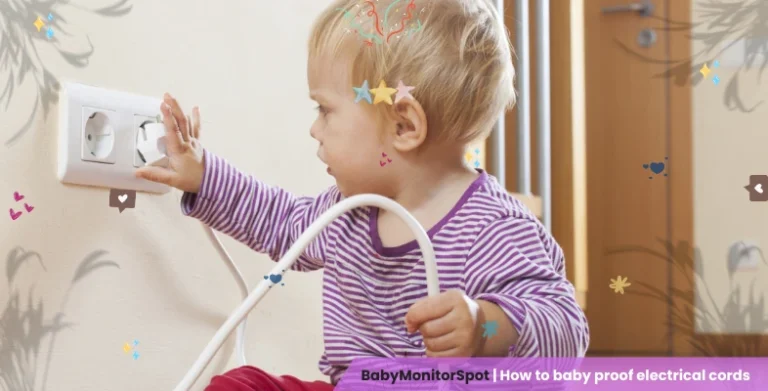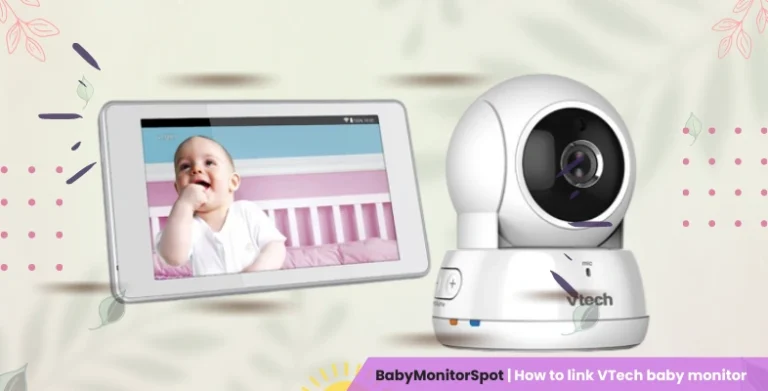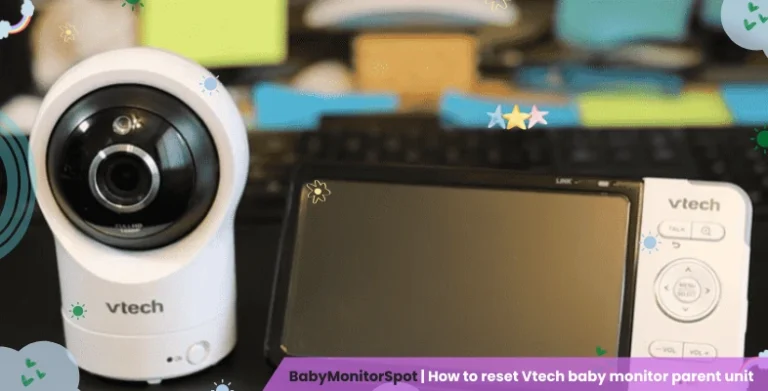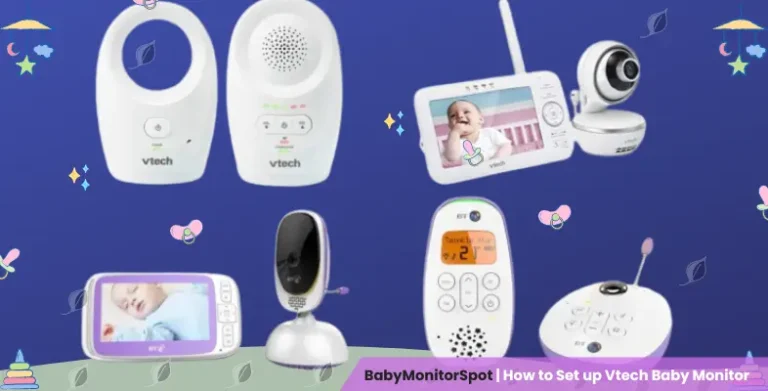How To Baby Proof Electrical Cords In 2023? – 5 Easy Ways
-
Ejaz
- Published
- Updated 2023-10-24

There’s no doubt about it, children are curious. They like to explore and try to learn new things. Unfortunately, this curiosity sometimes leads them to poke at something they shouldn’t be poking at. Electrical outlets are one of the most common places children get hurt when they stick their hands into them. How to baby proof electric cords. The number one safety hazard for babies is the electrical cord.
In this guide, I will explain how to baby proof electrical cords. Also, I will discuss types of electrical outlets, electrical outlet covers, and some FAQs so you can ensure your baby’s safety.
How To Baby Proof Electrical Cords with 5 easy ways?
Outlet covers are great for proofing electrical cords from babies. They can help prevent kids from being shocked when they touch an exposed outlet cord. Outlets with covers are more expensive, but they’re safer and easier to install.
The covers come in a variety of shapes and sizes. The most common type is the plastic plug cover that looks like a standard electrical cord. Some bodies look like an extension cord or a power strip.
Before buying outlet covers, consider everything you own and pick accordingly, like lamps, video games, and entertainment systems. Then there are hairdryers, curling irons, toasters, blenders, and vacuums. Many of these have long cords.
Kids can be harmed by long cords because:
- The child can get into the outlet by pulling out the cord.
- The child wrapped the cord around their neck.
- A child gets shocked when they chew on the cord.
- Play with cords that have become damaged.
- A child suffers electrical burns.
- A child takes a trip.
Babyproofing your electrical cords is much simpler than you think. These are the five simple steps for a baby proof electric cord.
1. Evaluate the exposed outlets
Furniture can block access to cords, which is the easiest way to keep cables away from children. If you want to see which outlets are exposed, you should go through your home. It is possible to place furniture in front of them as a barrier.
2. Get a cord cover
If you can’t place a barrier in front of electrical outlets, you should get a cord cover, cord shortener, or both. The excess of a long cord can be stored in a receptacle if you have a cord shortener. The cable can’t be pulled and pulled on.
It usually comes as a combination of an outlet cover and a cord cover. This keeps the cord and plugs hidden, making it hard to pull the cord or plug out of the outlet.
3. Strap cords down
You might have long cords running across a room or along a wall. If you want to cover them with carpets, use tape to stick them to the floor.
Silicone or plastic duct cord covers are also used. These duct covers allow you to string multiple cords through the floor. Children are prevented from tripping on cables and damaging things with this.
4. Wrap cords
Wrap the cords together in areas of your home where you have multiple lines, such as near a media center or computer. It keeps things organized, and kids will be less likely to play with them.
You can use multiple devices to wrap cords. We recommend using a cord sleeve. It’s very easy to remove cord sleeves.
5. Cord protectors
There are cord protectors that keep cords safe from your children. The cord protectors will prevent damage if your child tries to bend, bite, or spoil the cable. Your baby is also protected from damaged cords. If you have unruly children, cord protectors are the best solution.
Types of electrical outlets
If you want to make your outlets accessible to little hands, First, you need to understand what outlets you have in your home and get the correct guards. There are different types of outlets. Below I’ll cover it in detail.
1. GFCI Outlets
The GFCI outlet significantly reduces the risk of electric shock by stopping the current flow between an appliance you plug in, like a hair dryer, and something else that may harm it.
These Interruptions can be caused by various problems, including contacting water or overheating.
The “reset” and “test” buttons on the outlet signify that you have a GFCI outlet. You can use the buttons to check the outlet’s ability to stop the current from flowing and provide power.
2. AFCI outlets
Similar to GFCI outlets, Arc Fault Circuit Interrupter (AFCI) outlets. ARC in your electricity is designed to prevent danger to you and your family. An arc fault occurs when damaged wires do not connect properly and cause sparks.
Types of electrical outlet covers
An outlet cover is the easiest way to protect your children from the dangers of electrical cords. Three of the most commonly used electrical outlet covers are listed below.
1. Plastic outlets cover
You may have seen plastic outlet covers before. They are durable and prevent direct contact with fingers or objects. It is hard for tiny fingers to remove the bodies.
Any style of outlet you have in your home will fit a plastic electrical outlet cover. With a variety of levels of security to choose from, you can find a suitable device for your specific needs.
Pros: Plastic outlet covers are affordable and can be purchased in bulk. If you have to babyproof your entire home, this is helpful. You can easily install and remove them.
Cons :As they get older, children can pull out the plastic outlet covers.
2. Outlets boxes
An outlet box has enough room for appliance cords and completely covers the outlet. There are various outlet boxes but look for one with a two-button release system. This will make it very difficult for your child to open it.
Pros: Outlet boxes can be used for heavier appliances, such as dryers, televisions, washers, and refrigerators. Easy to use.
Cons: Finding an outlet box to keep kids away from it might not be easy. If you don’t have enough space, you might be unable to fit an outlet box.
3. Self-closing outlet covers
The self-closing outlet covers are also known as sliding surfaces. To install, you remove the screw that holds the cover over the outlet and replaces it with a self-closing one. The cover on the outlet will automatically slide over the holes if you remove a plug. To plug something in, most self-closing outlets have a slide function; you slide the cover over to expose the plug holes.
Pros: Self-closing outlets are some of the most effective covers for protecting your children. A child can’t remove them since they are the entire outlet cover.
Cons: It takes a lot of elbow grease to replace all the previously installed outlet covers in your home. Self-closing covers may be more complicated if you are short on time or uncomfortable with screwdrivers.
How do baby proof power strips?
Kids can be exposed to excessive electricity if they have power strips on. To prevent your power strip from becoming a dangerous toy, purchase a power strip cover.
The power strip cover is generally made of plastic and has a long slit on one side. The cords can come through while the outlets and power buttons are covered.
Children should be taught to use electricity safely
Teaching your children to use electricity safely when they’re older is a good idea.
Five things you can do and five things your child can do to support electrical safety in the home are included in this list.
Parents responsibility
- When young children are watching, do not plug and unplug cords.
- Don’t put fun and colorful objects near electrical outlets.
- The rules on who can turn on lamps and electronics should be set.
- Don’t leave hair dryers plugged in when they aren’t being used.
- Children will be provided with supervised chances to use electric appliances.
Children responsibility
- Videos about electrical safety are available to watch.
- It is a good idea to learn warning signs such as sparkling objects.
- Obey the rules that the parents set.
- When things need to be plugged in, ask your parents for help.
- Don’t let electronics near water.
Why do electrical outlets pose a danger to babies?
Electrical outlets are dangerous because they can be an easy way for a baby to get hurt. Many electrical outlets are not properly grounded, meaning electricity could travel through the outlet and into a child’s body. A baby touching an ungrounded electrical outlet can cause severe burns or other injuries. Children like to touch everything, and an electrical outlet is no exception.
They are often curious about things, and as they try to figure out what is going on in a room, they are likely to touch the outlet. Children usually try to turn the power off with an electrical outlet by pushing the “off” button. This could be a severe problem if a baby does this. If a baby touches the “off” button, the outlet will not turn off, and the electricity will flow through the outlet and into the child’s body. This could cause severe burns. The best way to prevent a baby from getting hurt is to cover all outlets in the room where the baby is playing.
What happens if the baby touches the outlet?
Babies and toddlers get shocked by touching an electrical outlet. They can get burned, too. It happens quickly, and it usually doesn’t happen often. But it can happen. If a child touches an electrical outlet, they will receive an electric shock that will likely burn them. The shock will signal to their brain that something terrible has happened.
How to protect a baby from an electrical outlet?
The first step is to get an outlet cover. Most outlets have an easy-to-open plastic cover that can be removed for easy access. If you want to make sure that your outlet has a cover, check the back panel. If your outlet doesn’t have a body, there are still ways to keep your child safe.
The best way is to use a cord lock. Cord locks are small plastic or metal devices that attach to the outlet and make it impossible for a child to access the cord. Cord locks are inexpensive and easy to use. Some parents even keep one in their car.
How do you cover up wall cords?
- Look for a stud or a gap in the wall. It would help if you also marked the border where you want the upper and lower holes to go.
- Attach a spot saw bit to the power drill.
- The cord or cords should be inserted through one of the hole covers.
- Push the hole covers firmly into place.
Conclusion
When it comes to baby safety, there are some easy ways that you can make your home safer for your kids. Electrical cords can be hazardous for babies and toddlers. The good news is that there are some simple steps that you can take to protect your child from this danger.
You must use a safe and reliable electrical cord cover to ensure your baby won’t put things in his mouth. The safest option is a plastic electrical cord cover. However, you can also buy outlet boxes or a self closing cord cover.
I hope this article is helpful for you. If you have any questions about how to baby proof electrical cords, please feel free to ask in the comments section below. Thanks for visiting 🙂
Latest Posts






